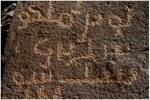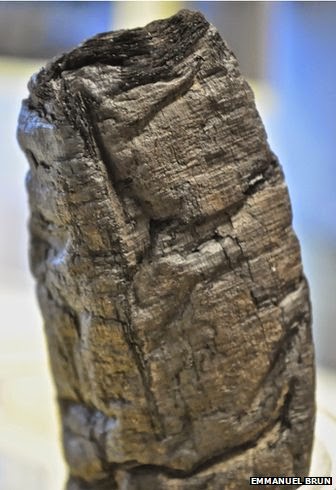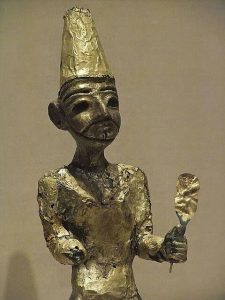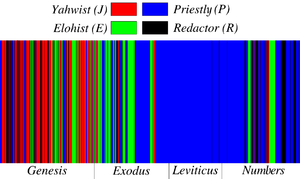Some recent news (and not quite so recent) that has come to my attention via the social media —
 A forest of crosses and names of martyrs in the desert of Saudi Arabia
A forest of crosses and names of martyrs in the desert of Saudi Arabia
A Franco-Saudi archaeological team is responsible for the discovery. Prof Frédéric Imbert dated the graffiti to 470-475, a time when anti-Christian persecution began, culminating under the usurper Yusuf. Even the Qur’an refers to it indirectly. The findings show how far Christianity had spread at the time, until the arrival of Islam.
Has anyone seen “First Century Mark”?
By P. J. Williams. He begins
I have had correspondence with Craig Evans and have his permission to confirm that he has not seen the alleged first-century manuscript of Mark and does not know the identity of the scholar or scholars to whom it has (presumably) been assigned for publication.
10 Great Biblical Artifacts at the Bible Lands Museum Jerusalem
Nothing new, but it’s always nice to visit a museum.
The Walls of Assyrian Nineveh destroyed
This is an Italian site so most of us will need an online translator. No doubt by now there are some sites with this story in English but this is the one that came to me first. From my Google translator:
A source in Nineveh province revealed on Wednesday, that the Islamic State of Iraq and Syria “ISIS” terrorist organization has resumed bombing historical buildings and monuments in the province, noting that it has blew up the historic wall in the center of Mosul.
The source, who asked for anonymity told “Shafaq News”, that “ISIS terrorists have destroyed on Tuesday night large parts of the historic wall of Nineveh in Tahrir neighborhood in the left coast of the Mosul area, noting that terrorists have used large quantities of explosives”.
Ah, how I miss Saddam …
 Xray imaging and the Herculaneum Papyri
Xray imaging and the Herculaneum Papyri
This one I can’t wait to learn more about. I suspect the results won’t be known for many years, however.
Hundreds of papyrus rolls, buried by the eruption of Mount Vesuvius in 79 AD and belonging to the only library passed on from Antiquity, were discovered 260 years ago at Herculaneum. These carbonized papyri are extremely fragile and are inevitably damaged or destroyed in the process of trying to open them to read their contents. In recent years, new imaging techniques have been developed to read the texts without unwrapping the rolls. Until now, specialists have been unable to view the carbon-based ink of these papyri, even when they could penetrate the different layers of their spiral structure. Here for the first time, we show that X-ray phase-contrast tomography can reveal various letters hidden inside the precious papyri without unrolling them. This attempt opens up new opportunities to read many Herculaneum papyri, which are still rolled up, thus enhancing our knowledge of ancient Greek literature and philosophy.
There is an earlier story (again in Italian so keep the translator handy) on Antonio Lombatti’s blog.
Pagan deities in ancient synagogues
I’ve always wondered what to make of these. The author’s attempt to rationalize an explanation with modern sensibilities strikes me as naively amusing. Continue reading “What they’re saying in the world of archaeology”
Like this:
Like Loading...







